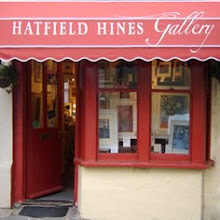 This week marks the 90th anniversary of the Armistice, which brought World War I to an end.
This week marks the 90th anniversary of the Armistice, which brought World War I to an end. The Western Front of World War One was a short train journey away from central London. The British government took advantage of this by commissioning paintings based on scenes witnessed at first hand by the leading artists of the day.
The Western Front of World War One was a short train journey away from central London. The British government took advantage of this by commissioning paintings based on scenes witnessed at first hand by the leading artists of the day.
They sent artists to cover other aspects of the war as well - on the home and diplomatic fronts.
The intention was to use these images for propaganda purposes, and also as a way of commemorating the war and the people caught up in it.
Many of the artists fulfilled this brief admirably, some also taking the opportunity to examine the moral issues surrounding the war in the process.
 Many special exhibitions have been staged by the National Museums, to commemorate this anniversary. They offer a fascinating insight into the art of war:
Many special exhibitions have been staged by the National Museums, to commemorate this anniversary. They offer a fascinating insight into the art of war:
Click here: http://www.art-ww1.com/gb/visite.html for an interactive guided tour and directory of the art and painters of the First World War.
 Click here: http://www.bbc.co.uk/history/trail/wars_conflict/art/art_frontline_gal.shtml for a tour of the BBC's History Trail on the Art of War and Conflict, including picture analysis of Totes Meer, by Paul Nash, a quiz on art in wartime and useful links to many national museums.
Click here: http://www.bbc.co.uk/history/trail/wars_conflict/art/art_frontline_gal.shtml for a tour of the BBC's History Trail on the Art of War and Conflict, including picture analysis of Totes Meer, by Paul Nash, a quiz on art in wartime and useful links to many national museums.
Click here: Special Displays for a link to Last Post: Remembering the First World War at the Churchill Museum and Cabinet War Rooms (6 November 2008 – 28 February 2009)
This exhibition offers a fascinating insight into the story of the Post Office during the First World War.
It follows the stories of soldiers and spies, machinery and medals, commitment and communication and looks at how the Post Office responded to the war in getting mail to those serving or being held prisoner around the globe.








No comments:
Post a Comment